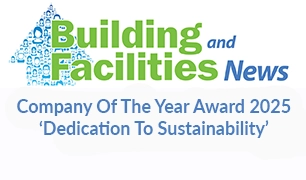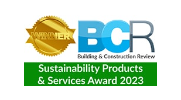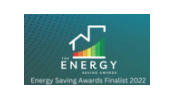The Importance of Embodied Carbon
The building industry is a major contributor to greenhouse gas emissions, accounting for nearly 40% of global energy-related emissions. While operational emissions, from energy used to heat, cool, and power buildings have been the focus of attention, embodied carbon emissions, from the production, transportation, and disposal of building materials, are increasingly recognized as a significant concern.
Embodied carbon is the total greenhouse gas (GHG) emissions associated with the entire lifecycle of a building’s materials, from extraction to manufacturing, transportation, and disposal. These emissions are “embodied” within the building itself and are released over time, even if the building is operated efficiently.
A significant, yet often overlooked source of emissions, and unlike operational emissions which can be reduced through energy efficiency measures, embodied carbon emissions are more difficult to address. Once a building is constructed, its embodied carbon emissions are locked in and cannot be easily changed.
As buildings become more energy efficient, embodied carbon emissions will become an even more significant share of the total carbon footprint of buildings. In fact, some estimates suggest that embodied carbon could account for up to 80% of the total carbon footprint of new buildings by 2050.
Measuring Whole Life Carbon Of The Built Environment
In response, a new assessment standard for carbon measurement in the built environment from The Royal Institution of Chartered Surveyors (RICS) is set to be the framework for significantly reducing the industry’s carbon output.
The Whole Life Carbon Assessment for the Built Environment (WLCA) standard has been updated from its first edition, released in 2017 and is now suitable for global use and can cover all built assets and infrastructure projects throughout the built environment lifecycle.
Using the WLCA standard, assessors can estimate the amount of carbon emitted throughout the life cycle of a constructed asset, from the early stages of development through to the end of life. It gives visibility to embodied carbon, operational carbon, and user carbon – something that is vital to carbon calculations and a unique feature of the RICS standard.
By giving visibility to the carbon cost of different design choices, the standard aims to help manage carbon budgets, reduce lifetime emissions, and deliver a net-zero future for the built environment.
Through this process, property managers gain an understanding of the carbon costs and benefits of design choices in construction. It provides information on calculating and reporting carbon emissions over the lifecycle of a built asset, including production, construction, operation, end of life and beyond asset life.
Embodied Carbon & Water Heating
With its focus firmly on sustainable alternatives for supplying domestic hot water demands to commercial properties, Adveco recognises the need to deliver system design which is supported by embodied carbon data. We are already aware of the requested levels of data required by consultants and specifiers in the UK and are well into the process of collating manufacturing data on our product lines to ensure embodied carbon figures are readily available.
Adveco is in constant discussion with its manufacturing partners globally as well as assessing its own internal policies and operations to develop strategies that can support the reduction of embodied carbon emissions in the building industry.
These discussions range from specifying low-carbon materials in the manufacturing processes, improvements in efficiency, reducing the size and weight of components or even eliminating them entirely if deemed unnecessary. This is especially true of the latest generation of packaged systems such as FUSION and FUSION integrated with solar thermal, where systems are increasingly more compact and supplied ready to install with pre-made pipework kits for less waste. The systems also leverage high-quality build materials, such as stainless steel, and components to ensure an extended working lifespan, reducing the need for replacement and the impact over time of embodied carbon. Where possible we encourage the application of recycled materials, especially metal and alloys, and continue to source as much as possible from the UK and European manufacturing to shorten transportation distances. Offsite construction and a focus on packaged whole systems also enables us to reduce the number of deliveries to a project site, in optimal conditions a whole system will be delivered in a single instance.
Embodied carbon is a critical issue that must be addressed if the building industry is to meet its climate goals. By adopting a holistic approach that considers the entire lifecycle of building materials, the industry can significantly reduce its carbon footprint and contribute to a more sustainable future.
Produced in partnership with the UK’s Department for Transport and Net Zero Waste Scotland, RICS will take the new WLCA standard to the United Nations Climate Change Conference (COP28) in Duba next week.
















